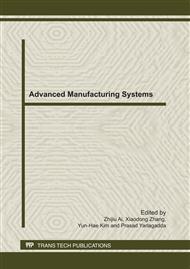p.349
p.353
p.358
p.362
p.367
p.371
p.375
p.379
p.386
Surface Electrical Resistances Properties of CNF/PC Nano-Composite Processing by Injection Molding
Abstract:
In the present work, carbon nanofibers (CNF) were dispersed into polycarbonate (PP) with an injection molding machine. The effect of the injection conditions on the electrical resistance of carbon nanofiber/polycarbonate (CNF/PC) nanocomposites was investigated. It was found that the surface resistance decreased with the increase of injection speed and injection temperature. The surface electrical resistance was affected by the particle size and dispersion of CNF, the effect of depth on surface resistance of the composites was studied, the surface electrical resistance sharply increased from the material surface to the internal at first, after that, a decreased slowly was observed. The effect of surface roughness on surface electrical resistance was also studied, the composite with a low surface resistance was greatly influenced when surface roughness changed, while there was not a same phenomenon when the composites have a high surface resistance.
Info:
Periodical:
Pages:
367-370
Citation:
Online since:
September 2011
Authors:
Keywords:
Price:
Сopyright:
© 2011 Trans Tech Publications Ltd. All Rights Reserved
Share:
Citation:


